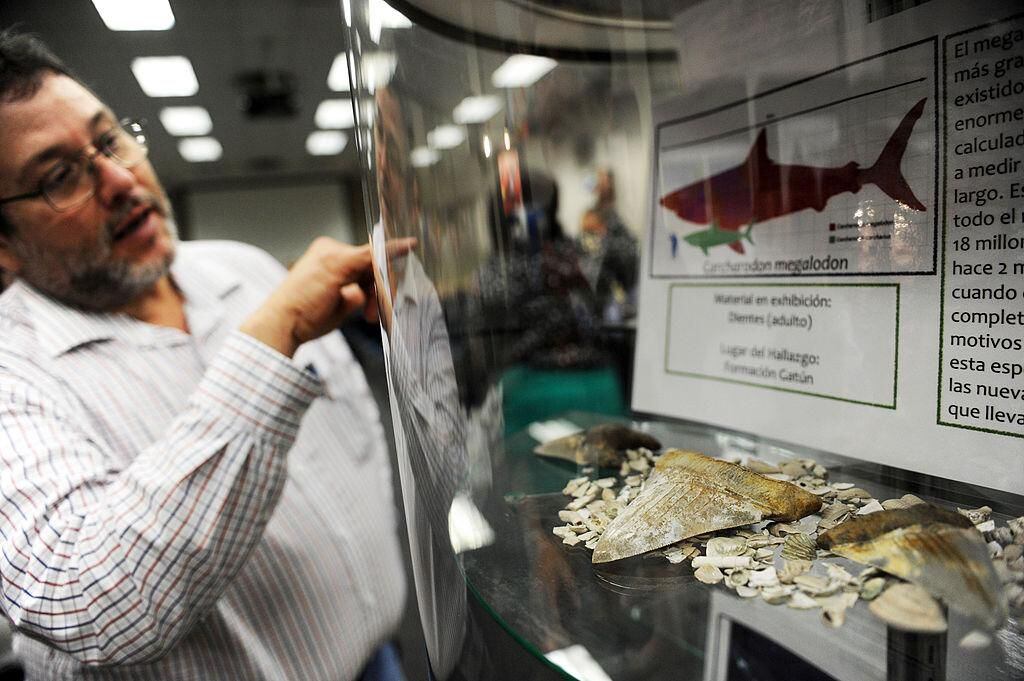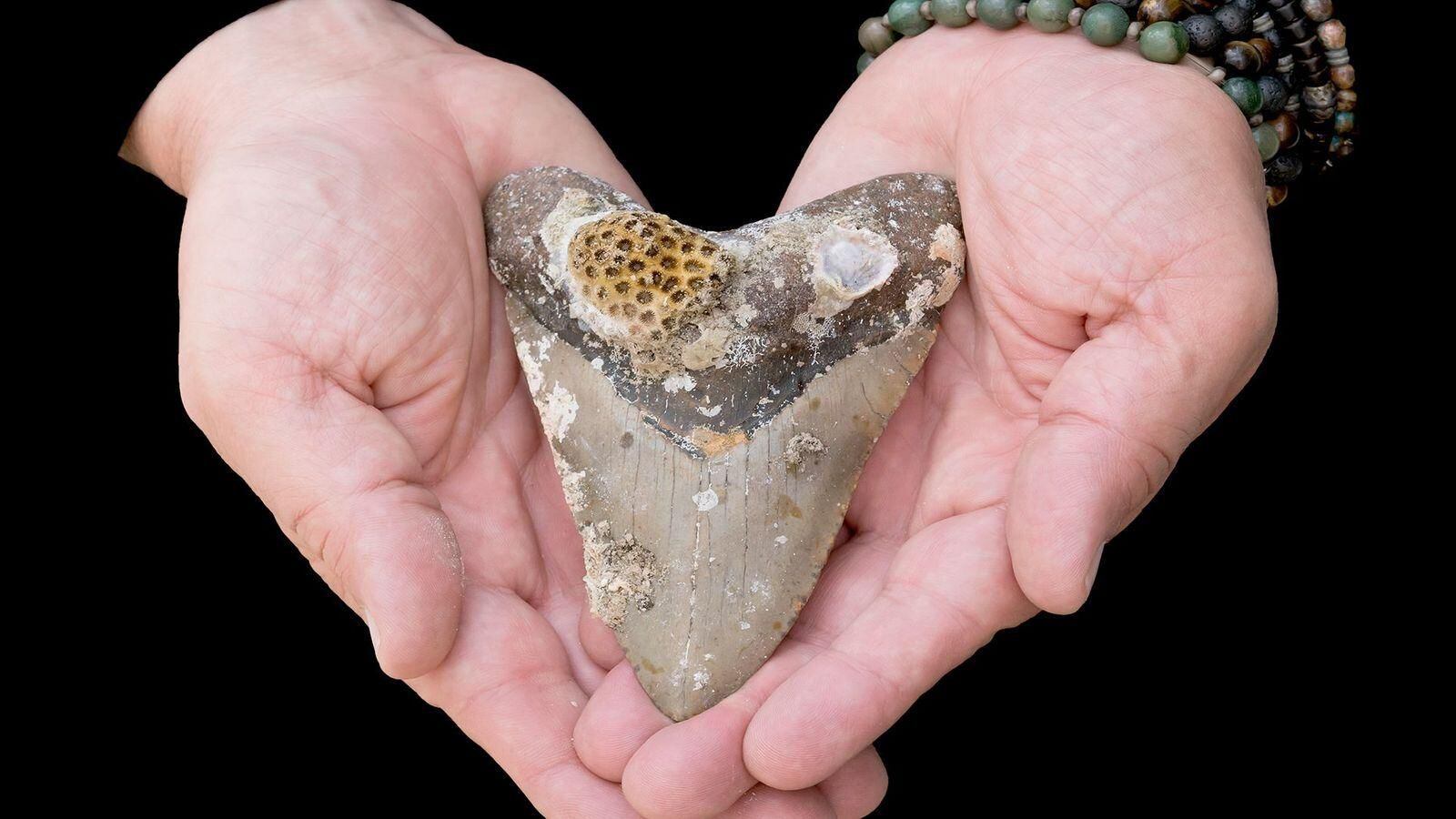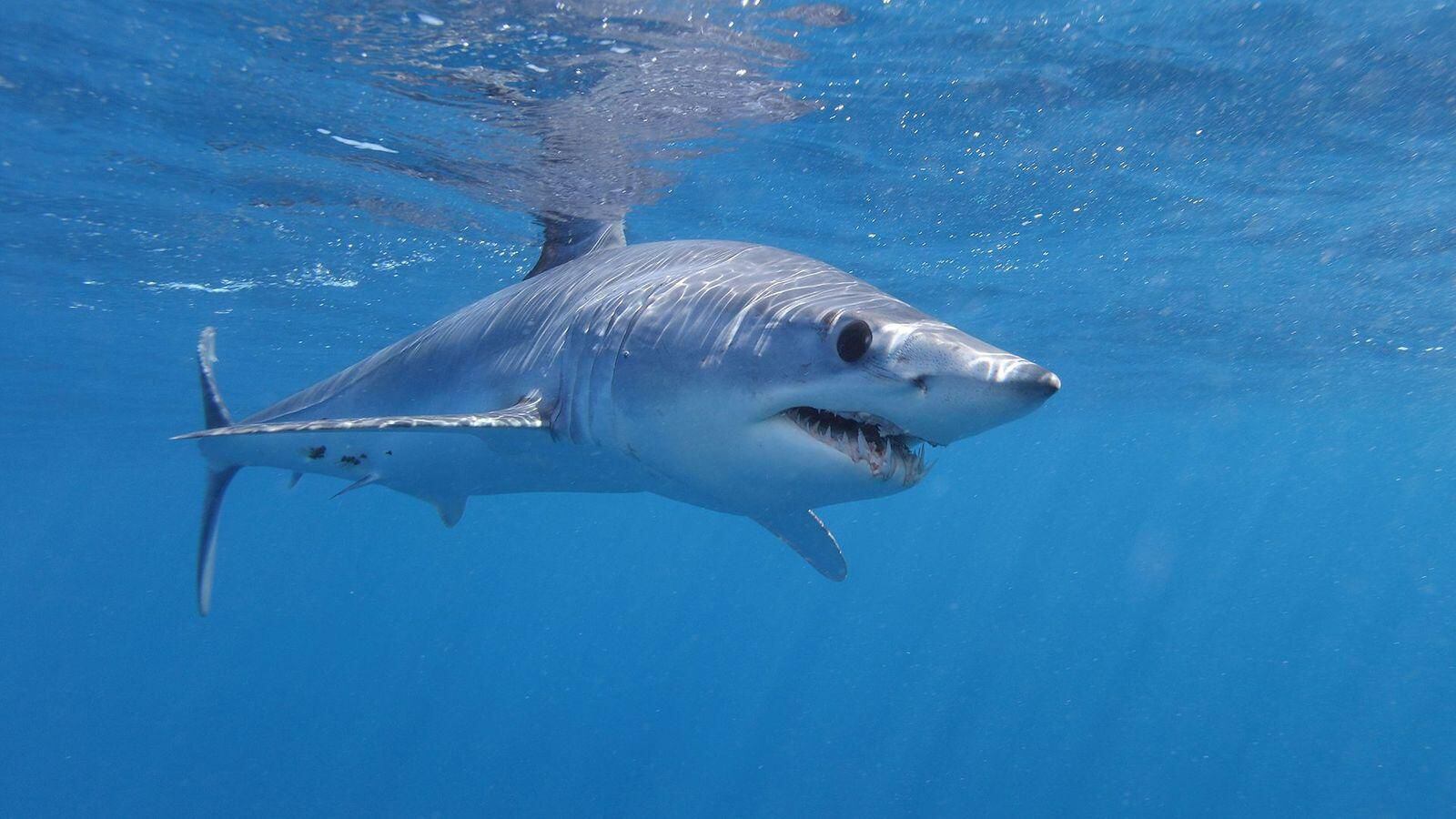The giant shark is back.
Five years after the premiere of “megalodon”, in which action star Jason Statham battled a huge prehistoric shark, the sequel to the film is upon us.
LOOK: The Mexican student María Fernanda Sánchez is found dead two weeks after her disappearance in Berlin
The creature that both movies portray was once very real.
The Sharks megalodons terrorized the oceans for about 20 million yearsbefore disappearing about 3.5 million years ago.
They were the largest sharks that ever existed and one of the largest marine predators.
New research provides insight into how these creatures may have lived and hunted.
big tooth
Megalodons have been known to science since the 1840s thanks to their huge triangular teeth that have been found fossilized.
The name “megalodon” means “big tooth” in ancient Greek.
And it’s not a joke about the big teeth: some measured 16.8 centimeters long.
For comparison, the teeth of the great white shark reach a maximum of 7.5 centimeters.
To know how big the megalodons were, we would need a complete skeleton, but we don’t have it.
Sharks are cartilaginous fish, which means their skeletons are made of soft cartilage instead of hard bone, and cartilage doesn’t fossilize well.
As a result, the megalodon fossil record consists primarily of teeth, apart from some vertebrae, which are partially mineralized.
“We really don’t have a great idea of what it actually looked like,” says Sora Kim, an ecogeochemist at the University of California, Merced, who studies the chemistry of megalodon teeth.
Paleontologists have estimated the size by comparing the megalodon’s teeth with those of other sharks for which body sizes are known.
But this is inherently uncertain because larger animals are not simply enlarged versions of smaller ones.
That’s why there have been disagreements.
Many studies have suggested that the megalodon could have measured 18 or even 20 meters.
However, in a 2019 study, paleobiologist Kenshu Shimada of DePaul University in Chicago argued that those estimates were wrong.
He argued that the upper front teeth were of the best metric and produced a maximum shark length of 15.3 meters.
The following year, a team led by Victor Perez, then at the Florida Museum of Natural History in Gainesville, took a different view.
Instead of their length, they looked at the width of the teeth, which determines the size of the mouth opening.
This indicated that the megalodon could actually have grown up to 20 meters in length.
Their analysis is “very convincing,” says Catalina Pimiento, a marine paleontologist at the University of Zurich in Switzerland.

Shimada also agrees that this longer length is possible.
This means that the megalodon would dwarf any comparable modern shark.
The largest predatory shark today is the great white shark, which reaches a length of 4.9 meters.
The megalodon may have been three to four times as long.
The modern whale shark is on a par with the megalodon, but it is not a predator.
Both are dwarfed by the larger baleen whales.
Blue whales are the largest living animals and can reach 30 meters.
The result of these numbers is that the megalodon is not in contention for the title of largest animal, although it may well be the largest shark and predator that ever lived.
super predator
The teeth reveal that the megalodon was a predator, but what did it eat? To answer that, the researchers turned to chemical analysis of the teeth.
One approach is to look at nitrogen. All the nitrogen in an animal’s body comes from the protein in its food.
As a result, animals higher up the food chain have a higher proportion of nitrogen in their bodies, including their teeth.
In a 2022 study, researchers including Kim demonstrated that megalodon teeth had extremely high levels of nitrogen.
This suggested that it was a top predator that ate larger prey, such as modern killer whales.
Another 2022 study, with Shimada and Kim as co-authors, looked at zinc isotopes and they looked more like the great white shark: a top predator, but not that top.

Part of this uncertainty may be due to differences between youth and adults, says Pimiento.
Juvenile great white sharks mainly eat fish, while adults They look for marine mammals.
Young megalodons may have followed a similar transition.
More clues about megalodon reproduction emerged in a 2020 study by Shimada and colleagues.
They studied a creature that was around 2 meters long when it was born, a large size that suggested that the fish had hatched inside its mother instead of being an egg laid, as many species of fish do.
The team also suggested that the embryo had eaten other eggs while in the womb, which helped it grow so large.
While it sounds shocking, such “intrauterine cannibalism” is common in modern sharks.
Hot blood
He megalodon he had some truly formidable physical abilities.
In 2022, Pimiento and his colleagues scanned a rare, nearly complete vertebral column and used it to recreate a complete skeletal model of the species.

That allowed them to conclude that the megalodon was an expert swimmer that could cover great distances at average cruising speeds of around 1.4 m/s, faster than any shark alive today.
The team was also able to estimate the size of its stomach and its opening. “The jaw opening was so large that they could hold really big preysays Pepper.
An adult megalodon could eat an animal the size of a modern orca in just a few bites. Such food would sustain him for a considerable time. “Even with a single prey it could have been able to move very long distances,” says the scientist.
Based on all this, Pimiento and his colleagues described the megalodon as a “transoceanic super predator” that he could routinely swim from one ocean to another.
This active lifestyle was supported by another characteristic: warm blood, which allowed it to swim farther and faster, and venture into colder waters.
However, it now appears that the megalodon’s size and warm blood may also have been its undoing. “The megalodon went extinct once the sea level dropped and there wasn’t enough prey,” says Pimiento.
In 2017, she and her colleagues identified a mass extinction in the oceans, wiping out the megalodon and other large marine animals. “All the animals had a high metabolic demand,” she says. Once prey became scarce, the megalodon lifestyle it became too expensive from an energy point of view.
This extinction occurred millions of years ago.
Source: Elcomercio
I am Jack Morton and I work in 24 News Recorder. I mostly cover world news and I have also authored 24 news recorder. I find this work highly interesting and it allows me to keep up with current events happening around the world.

:quality(75)/cloudfront-us-east-1.images.arcpublishing.com/elcomercio/Z4OJUQGCUNBM5GRGJMSMGHVZQM.jpg)





